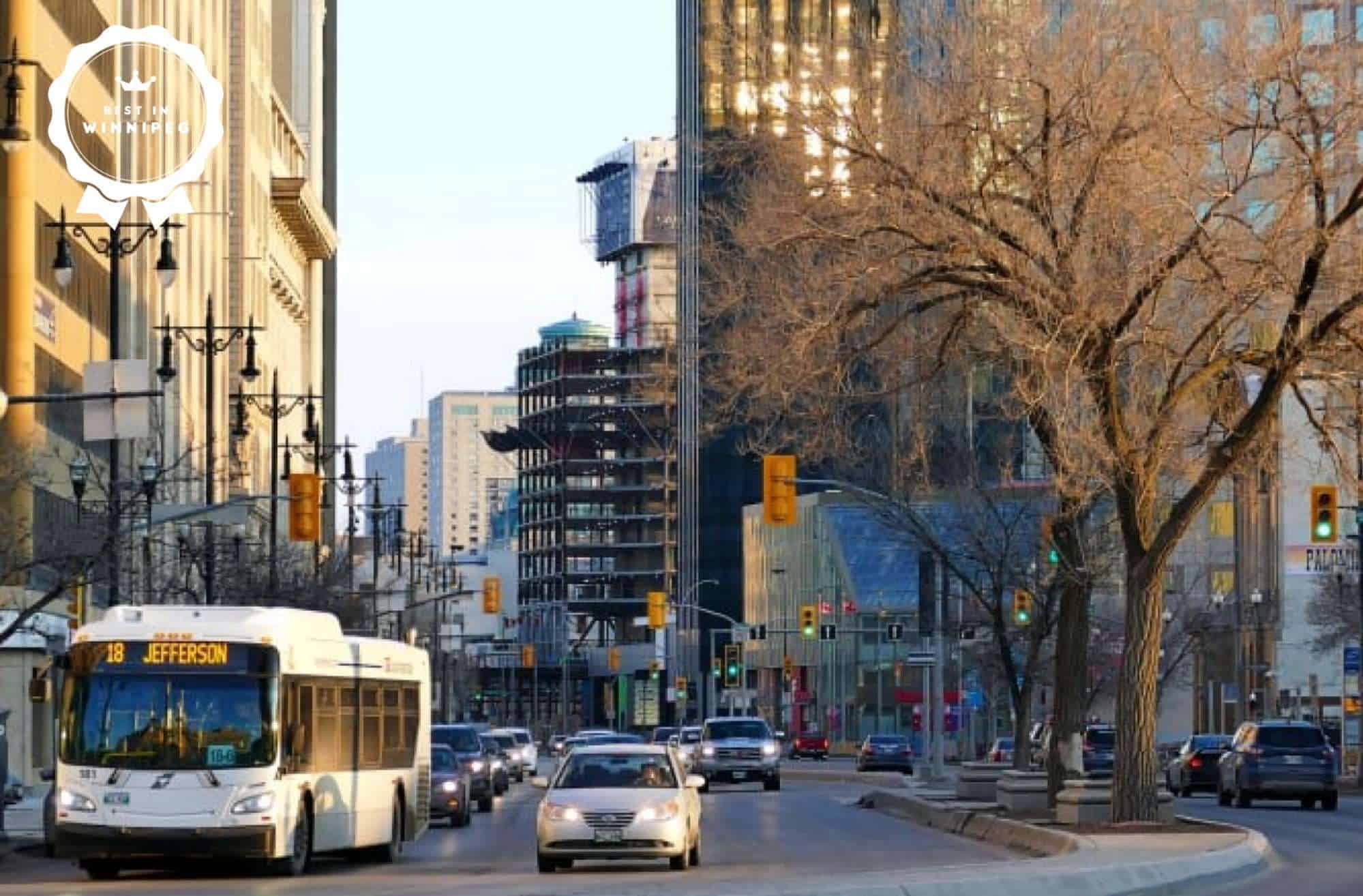Do you need a car in Winnipeg? Here’s the truth.
As a proud resident of Winnipeg, I’ve come to understand the unique challenges and advantages of navigating this vibrant city. One topic that often sparks lively debates among Winnipeggers is the necessity of owning a car.
Being someone who has experienced the daily hustle and bustle firsthand, I find myself uniquely positioned to shed light on this question and offer an honest perspective.
So, if you’re wondering whether you truly need a car in Winnipeg, let’s hit the road together and uncover the truth about owning a car in our beloved city!
Is it okay to live without a car in Winnipeg?

It is possible to live without a car in Winnipeg. The city has a good public transit system and there are many bike lanes and walking trails.
Living without a car in Winnipeg is feasible due to the city’s relatively well-developed public transportation system. Winnipeg Transit operates an extensive bus network that covers the majority of the city, including both urban and suburban areas.
The transit system is constantly expanding and improving to meet the needs of residents.
Winnipeg also has an extensive network of cycling paths and lanes, making it bike-friendly for those who prefer cycling as a means of transportation. This infrastructure allows for convenient and eco-friendly commuting within the city.
Moreover, various amenities and services such as grocery stores, shops, restaurants, and entertainment venues are typically accessible within walking distance or a short bus ride in many neighborhoods.
Living in central areas like Downtown, Osborne Village, or Corydon Avenue often offers proximity to a wide range of amenities, further reducing the need for a car.
Additionally, car-sharing services and ride-hailing platforms like Uber are available in Winnipeg, providing alternative options for occasional transportation needs or longer trips where public transportation may be less convenient.
How’s the transportation system in Winnipeg?

Winnipeg’s public transit has efficient dedicated lanes connecting downtown to the southwest. It offers a convenient and reliable option for commuters and contributes to reducing traffic.
The Southwest Transitway light rail system further enhances transportation options for residents and visitors.
The transportation services are supported by comprehensive schedules, maps, and real-time bus tracking systems.
These resources assist passengers in planning their journeys and staying informed about bus arrival times.
What is the available transportation system in Winnipeg?
Winnipeg has a variety of transportation options, including public transit, bicycles, taxis, ride-hailing services, and car sharing. The best transportation option for you will depend on your needs and budget.
Public Transit

Winnipeg Transit operates a comprehensive bus network throughout the city. It provides convenient and affordable transportation options with over 80 routes covering various areas.
The buses are equipped with features such as bike racks and accessibility accommodations.
Bicycles

Winnipeg has an extensive network of bike lanes and paths, making cycling a popular mode of transportation.
The city has invested in improving cycling infrastructure, including dedicated lanes, bike parking facilities, and bike-sharing programs like Peg City Car Co-op and Bike Winnipeg.
Taxis

Taxis are available throughout Winnipeg and can be hailed on the street or booked through phone apps or dispatch services.
Several taxi companies serve the city, offering convenient transportation options for those who prefer door-to-door service.
Ride-Hailing Services

Popular ride-hailing services like Uber and Lyft are available in Winnipeg. These platforms allow users to request a ride through a mobile app, providing a convenient and reliable transportation alternative.
Car Sharing

Car-sharing services like Peg City Car Co-op offer residents the flexibility of using a car without the costs and responsibilities of ownership.
These services provide access to shared vehicles located throughout the city, allowing users to rent a car for short periods.
How does the available transportation system in Winnipeg work?

Winnipeg’s transportation system offers extensive bus routes, a light rail system, bike lanes, Bixi bike shares, taxis, ride-hailing (Uber/Lyft), and car sharing.
Buses run frequently, and fares vary. Multiple choices cater to diverse transportation needs.
Winnipeg Transit operates an extensive bus system with over 89 routes covering the city, complemented by the Southwest Transitway light rail system. During peak hours, buses run every 10-15 minutes, while off-peak hours see a frequency of 30-60 minutes.
For adults, a single bus trip costs $3.15, while seniors, youth, and children pay $2.65 and $2.15, respectively.
Passes, including daily, weekly, monthly, and semester passes, can be purchased online, at Winnipeg Transit Customer Service Centres, or select agent locations.
For cyclists, Winnipeg offers a well-connected network of bike lanes and trails, facilitating easy and eco-friendly transportation.
Bixi Winnipeg, a bike share program, boasts 40 stations and over 500 bikes throughout the city. Renting a Bixi bike costs $3 for the first 30 minutes, with an additional $0.50 for every 15 minutes thereafter.
While taxis are available in Winnipeg, they can be pricey. Fares for taxi rides start at $3.50, and each kilometer adds an extra $0.25 to the cost.
Alternatively, ride-hailing services like Uber and Lyft operate in the city, offering more affordable options, though prices may surge during peak times.
Generally, the fare for a ride-hailing service starts at $2.50, with an additional $0.15 per kilometer.
Car-sharing services present another transportation alternative, particularly suitable for occasional car users. These services allow individuals to rent a car by the hour or day, often at a more budget-friendly rate compared to owning a car.
Pricing varies depending on the specific car-sharing service chosen.
How’s the traffic in Winnipeg on a daily basis?

Winnipeg traffic can be challenging during rush hours. The morning rush hour (7 AM to 9 AM) experiences an average travel time of 25% longer than off-peak hours.
However, the situation worsens during the evening rush hour (4 PM to 6 PM), with an average travel time of 50% longer than off-peak hours.
Major arteries connecting the city center to the suburbs, such as Portage and Main, Osborne and Main, Pembina Highway and Bishop Grandin Boulevard, and McPhillips Street and Portage Avenue, are among the busiest and most congested intersections.
It’s worth noting that traffic flow can be further affected by construction projects and adverse weather conditions.
A recent study revealed that a major construction project on a Winnipeg artery resulted in average daily traffic delays of approximately 20 minutes.
Is it cheaper to live in Winnipeg without a car?

Yes, it can be cheaper to live in Winnipeg without a car. The average cost of owning a car in Winnipeg is $9,000 per year, including insurance, gas, parking, and maintenance.
The cost of owning a car can vary depending on the type of car you own, your driving habits, and where you live.
However, even if you own a relatively inexpensive car and drive carefully, you are still likely to spend several thousand dollars per year on car expenses.
On the other hand, the cost of living in Winnipeg without a car is much lower. You can get around the city by walking, biking, or taking public transportation.
How much does it cost if you don’t have a car in Winnipeg?

The cost of living in Winnipeg without a car can be significantly lower than with a car. The average cost of owning a car in Winnipeg is $9,000 per year, while the cost of living without a car can be as low as $3,100 per year.
Here is a breakdown of the average cost of living in Winnipeg without a car:
In comparison, here is a breakdown of the average cost of owning a car in Winnipeg:
Is Winnipeg a walkable city?

Winnipeg is somewhat walkable, with a walk score of 48.
Some areas, like the Exchange District (walk score of 92) and Osborne Village (walk score of 91), offer more walkable areas, but many parts of the city lack sidewalks, have wide streets, and have cold winters.
The walk score is a rating system that measures the walkability of a neighborhood or city. It takes into account factors such as the density of sidewalks, the number of businesses and amenities within walking distance, and the average speed of traffic.
A walk score of 48 means that most errands can be accomplished on foot, but some may require a car.
There are some areas of Winnipeg that are more walkable than others. For example, the Exchange District and Osborne Village have a walk score of 78 and 80, respectively.
These areas have a high density of businesses and amenities, and the streets are relatively narrow.
However, many parts of Winnipeg are not well-suited for walking. For example, some parts of the city do not have sidewalks, and the streets are very wide.
This can make it difficult and dangerous to walk.
Additionally, Winnipeg has long, cold winters. This can make it unpleasant to walk, and it can also be dangerous due to the ice and snow.
Which area of Winnipeg is best to live without a car?

The Exchange District and Osborne Village are the most walkable areas of Winnipeg, making them ideal for living without a car.
These areas have a high density of businesses and amenities, and they are well-served by public transportation.
The Exchange District, a historic district situated in downtown Winnipeg, boasts a charming ambiance with its array of shops, restaurants, and art galleries.
This vibrant area invites residents to explore its rich heritage while enjoying the diverse offerings it presents.

Located just south of downtown Winnipeg, Osborne Village stands out as a trendy neighborhood filled with an eclectic mix of shops, restaurants, and bars.
This lively district captures the essence of urban living, providing residents with a vibrant atmosphere and a multitude of dining and entertainment options to indulge in.
Both neighborhoods are well-served by public transportation, making it easy to get around without a car.
In conclusion, you do not need a car to live in Winnipeg. However, it can be helpful to have a car if you live in the suburbs or if you need to travel long distances.
There are many areas of Winnipeg that are walkable or bikeable, and the public transportation system is decent.
However, if you have a disability or if you have young children, a car can make life easier. Ultimately, the decision of whether or not to get a car is a personal one.

